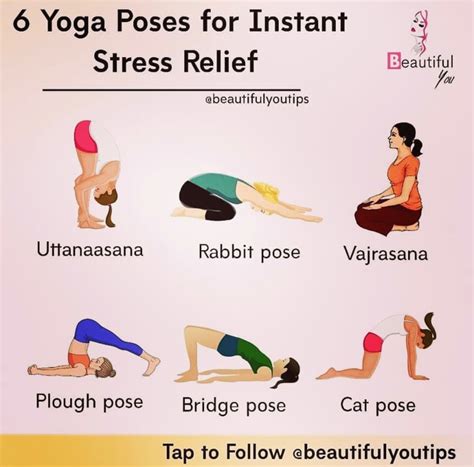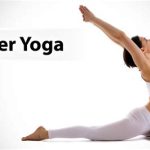Power Yoga: When and Why You Should Consider It
Power Yoga, known for its physically intense and dynamic nature, has gained popularity across the globe as a transformative fitness practice. But what exactly is Power Yoga, and when should you give it a try? In this article, we’ll explore the key aspects of Power Yoga, its evolution, practical benefits, and ethical considerations, helping you determine if it’s the right choice for you. We’ll dive deep into its history, present-day application, and future trends, while also examining its implementation in diverse settings.
Introduction
Yoga has evolved from its traditional roots to encompass a variety of styles, each catering to different needs. Among these styles, Power Yoga stands out as a high-intensity workout that integrates the physical and mental benefits of yoga with the endurance and strength-building focus of fitness routines. Whether you’re a seasoned athlete looking for a new challenge or a beginner interested in the holistic benefits of yoga, understanding when to try Power Yoga is essential for unlocking its full potential. But with its intense pace and demanding poses, how do you know if Power Yoga is the right fit for your fitness journey?
Key Concepts
Power Yoga differs from more traditional yoga practices like Hatha or Iyengar by focusing on continuous movement and strength-based poses. It incorporates elements of Vinyasa, linking breath to movement, and blends these with functional fitness exercises for a full-body workout. While mindfulness remains a core aspect, Power Yoga emphasizes physical fitness more than spiritual development.
- Dynamic Sequencing: Power Yoga is built on sequences that flow from one pose to the next, keeping your body in constant motion.
- Strength and Flexibility: While traditional yoga focuses on flexibility and relaxation, Power Yoga enhances both flexibility and muscular strength.
- Endurance: The fast pace and challenging poses of Power Yoga make it a cardiovascular workout, unlike other yoga styles.
- Mental Focus: Power Yoga teaches focus and mindfulness, though in a more physically demanding way compared to other forms of yoga.
Historical Context
The origins of Power Yoga can be traced to the early 1990s in the United States, when yoga teachers like Beryl Bender Birch and Bryan Kest sought to create a version of Ashtanga Yoga that would appeal to Western fitness enthusiasts. It was originally designed to cater to people who were more interested in the physical benefits of yoga, such as improved strength, endurance, and flexibility, rather than its traditional spiritual aspects.
Ashtanga Yoga, which heavily influenced Power Yoga, is itself a rigorous and structured practice. However, Power Yoga was adapted to be more flexible in terms of sequence and style. This flexibility allowed instructors to vary the class depending on their preferences and the needs of the students, breaking away from the rigid sequences typical of Ashtanga. Power Yoga became especially popular in the 2000s as more people sought out holistic, full-body workouts that provided both physical and mental benefits.
Current State Analysis
Today, Power Yoga is a mainstay in gyms, yoga studios, and online platforms worldwide. Its appeal lies in its ability to provide a comprehensive workout while still maintaining the mental clarity and focus associated with yoga. Power Yoga classes range from beginner-friendly to advanced levels, but they all share common features: an emphasis on strength-building, balance, and endurance.
Power Yoga has also evolved to include modern fitness trends, with many classes incorporating elements of high-intensity interval training (HIIT), calisthenics, or even resistance training. Despite its physical demands, the practice continues to emphasize alignment and injury prevention, making it an appealing option for fitness enthusiasts who want to push their limits without compromising on form.
Practical Applications
Power Yoga is ideal for individuals looking for a challenging workout that combines the benefits of yoga with cardiovascular fitness. Athletes, fitness enthusiasts, and even busy professionals can benefit from this style of yoga. Here are some situations where Power Yoga might be the right choice:
- Cross-training for Athletes: Athletes in sports like running, cycling, or swimming often use Power Yoga as a form of cross-training to improve strength, flexibility, and mental focus.
- Fitness Plateau: If you’ve hit a plateau in your regular workout routine, Power Yoga can help you break through by challenging your body in new ways.
- Weight Management: The fast-paced nature of Power Yoga can aid in calorie burning and muscle toning, making it effective for those looking to manage their weight.
- Stress Relief: While physically demanding, the focus on breath control and mindfulness in Power Yoga helps relieve stress and anxiety.
Case Studies
Below are case studies illustrating the various benefits of Power Yoga:
| Case Study | Context | Outcome |
|---|---|---|
| Athlete Cross-Training | A professional swimmer added Power Yoga to their training to improve shoulder flexibility and mental focus. | After six weeks, the swimmer reported improved range of motion and faster recovery times between training sessions. |
| Weight Management | A 35-year-old woman incorporated Power Yoga into her routine to burn calories and improve muscle tone. | Within three months, she experienced a 5% reduction in body fat and noted improvements in strength and stamina. |
| Stress Relief | A corporate executive started Power Yoga to manage work-related stress and anxiety. | After attending weekly sessions for two months, he reported reduced stress levels and improved sleep quality. |
Stakeholder Analysis
The main stakeholders in Power Yoga include yoga practitioners, fitness professionals, and wellness advocates. Each group has distinct needs and expectations from Power Yoga:
- Yoga Practitioners: Focus on combining physical fitness with mindfulness, seeking a balance between mental and physical well-being.
- Fitness Enthusiasts: View Power Yoga as an alternative to conventional workouts that helps build strength, flexibility, and endurance.
- Wellness Advocates: Promote the holistic benefits of Power Yoga, including stress relief, mental clarity, and overall health improvement.
Implementation Guidelines
Implementing Power Yoga into a fitness routine requires careful consideration of your goals, fitness level, and any potential physical limitations. Below are some general guidelines:
- Start Slow: Beginners should focus on mastering the basics before attempting advanced sequences.
- Consistency: Practicing Power Yoga regularly, even if it’s just once a week, can yield significant results over time.
- Incorporate Modifications: Many poses in Power Yoga can be modified to suit your fitness level and prevent injury.
- Listen to Your Body: Power Yoga can be intense, so it’s essential to honor your body’s limits and avoid overexertion.
Ethical Considerations
As Power Yoga continues to grow in popularity, it’s essential to consider its impact on both practitioners and the broader yoga community. Ethical considerations include:
- Commercialization: The rise of Power Yoga as a fitness trend has led some to question whether it retains the spiritual integrity of traditional yoga practices.
- Accessibility: Power Yoga classes can be expensive, limiting access for individuals from lower-income backgrounds.
- Inclusivity: It’s crucial to ensure that Power Yoga is inclusive and accommodates individuals of all body types and fitness levels.
Limitations and Future Research
Although Power Yoga offers numerous benefits, it also has some limitations that future research could address:
- Injury Risk: The fast pace and physically demanding poses of Power Yoga increase the risk of injury, particularly for beginners or those with pre-existing conditions.
- Lack of Standardization: Unlike traditional yoga practices, Power Yoga is not a standardized system, leading to variations in class quality and intensity.
- Research Gaps: While anecdotal evidence supports the benefits of Power Yoga, more scientific research is needed to fully understand its long-term effects on mental and physical health.
Expert Commentary
Power Yoga’s fusion of physical and mental challenges makes it a unique form of exercise that appeals to a wide range of individuals. However, it’s important to approach
Top Yoga Styles to Relieve Stress: Your Ultimate Guide
In today’s fast-paced world, stress has become an all-too-common companion for many people. Yoga, an ancient practice combining physical postures, breathing techniques, and meditation, offers a powerful antidote to stress. However, with so many styles of yoga available, it can be challenging to know which ones are most effective for stress relief. In this comprehensive guide, we explore the best yoga styles to reduce stress and improve overall well-being, helping you find the practice that suits your lifestyle and stress-management needs.
Introduction: Why Yoga for Stress Relief?
Stress affects the body, mind, and emotions. When left unchecked, it can lead to serious health conditions such as heart disease, anxiety, depression, and more. Yoga addresses stress by engaging the body in movement, enhancing breath control, and promoting mindfulness. Research shows that regular yoga practice reduces levels of cortisol, the body’s primary stress hormone, while also encouraging relaxation and mental clarity.
Key Concepts in Yoga for Stress Relief
Before diving into the specific yoga styles, it’s essential to understand the key concepts that make yoga effective in reducing stress:
- Pranayama (Breath Control): Yoga emphasizes conscious breathing, which helps regulate the nervous system and calm the mind.
- Asanas (Postures): Physical movements, from gentle stretches to more demanding poses, help release built-up tension in the muscles.
- Meditation and Mindfulness: Yoga encourages staying present, which can interrupt the cycle of stressful thoughts and improve emotional regulation.
- Balance of Effort and Ease: Yoga teaches a balanced approach to effort, inviting relaxation and awareness rather than overexertion.
Historical Context of Yoga for Stress
Yoga has roots in ancient Indian philosophy, originating over 5,000 years ago. While initially developed as a spiritual practice, yoga has evolved to encompass many physical, mental, and emotional benefits. In the early 20th century, yoga became popular in the West as a form of physical exercise, but it wasn’t until the late 20th century that its stress-relieving benefits were widely recognized. Today, scientific studies confirm that specific styles of yoga are particularly effective in mitigating stress and anxiety.
Current State of Yoga for Stress Relief
Yoga continues to grow in popularity as a stress-relief method, and numerous studies highlight its positive impact on mental health. Different styles of yoga offer varying approaches to stress management, from restorative and gentle practices to more dynamic and physically engaging styles. Understanding the benefits and techniques of each type is key to choosing the right one for your needs.
Best Yoga Styles for Stress Relief
| Yoga Style | Key Features | Best For | Example Practices |
|---|---|---|---|
| Hatha Yoga | Focuses on basic postures and breathing techniques at a slow pace. | Beginners and those seeking a gentle introduction to yoga. | Mountain pose, cat-cow, seated forward fold. |
| Restorative Yoga | Uses props to support the body in passive poses, promoting deep relaxation. | People looking for a highly relaxing, meditative experience. | Supported child’s pose, reclining bound angle pose. |
| Yin Yoga | Involves long-held poses targeting deep connective tissues and enhancing mindfulness. | Those who prefer slow, meditative practices. | Seated forward fold, dragon pose, butterfly pose. |
| Kundalini Yoga | Combines physical movement, breath control, and meditation to awaken energy. | People interested in a spiritual and energetic approach to stress relief. | Breath of fire, cobra pose, ego eradicator. |
| Vinyasa Yoga | Links movement with breath in a flowing sequence of poses. | Those who prefer dynamic and physically engaging practices. | Sun salutation, warrior sequence, downward-facing dog. |
| Iyengar Yoga | Focuses on precision and alignment in postures using props like blocks and straps. | Those who enjoy detailed, methodical practices with attention to form. | Triangle pose, bridge pose, seated twist. |
| Bikram Yoga | A set sequence of 26 poses practiced in a heated room. | People who enjoy structured routines and the challenge of heat. | Standing bow, half-moon pose, triangle pose. |
| Yoga Nidra | A guided meditation practice designed to induce deep relaxation and a meditative state. | Individuals looking for a meditation-focused approach to stress relief. | Guided body scan, breath awareness, intention setting. |
Practical Applications: Yoga for Different Stress Levels
The effectiveness of yoga for stress relief depends on the severity of stress and the individual’s personal preferences. Below are practical suggestions for choosing the right yoga style based on stress levels:
- Mild Stress: For mild stress and tension, gentle styles like Hatha or Yin Yoga can help ease the body and mind. These practices are non-strenuous and emphasize mindfulness and breath.
- Moderate Stress: For those experiencing moderate stress, styles like Vinyasa or Kundalini Yoga can provide both a physical workout and mental clarity, helping release pent-up energy while promoting mindfulness.
- Chronic Stress: Restorative Yoga or Yoga Nidra are ideal for chronic stress sufferers. These practices focus on deep relaxation and can calm the nervous system, addressing stress at its root.
Case Studies: Success Stories of Yoga for Stress Relief
To illustrate the effectiveness of yoga for stress management, here are a few case studies of individuals who integrated yoga into their stress-relief routines:
- Amy’s Journey with Restorative Yoga: Amy, a full-time professional struggling with burnout, found solace in Restorative Yoga. After practicing weekly for three months, she reported significantly lower stress levels and improved sleep quality.
- John’s Transition to Kundalini Yoga: John, dealing with anxiety, initially struggled to calm his mind. Kundalini Yoga, with its emphasis on breath control and meditation, helped him feel more grounded and in control of his thoughts.
- Emily’s Exploration of Yin Yoga: Emily, recovering from a stressful work environment, embraced Yin Yoga. The slow pace and long-held poses helped her release tension, both physically and mentally, leading to a more balanced state of well-being.
Stakeholder Analysis: Who Benefits from Yoga for Stress?
Yoga for stress relief benefits different stakeholders in unique ways:
- Individuals: People practicing yoga experience reduced stress levels, improved mood, and better physical health.
- Workplaces: Employers who offer yoga programs see increased employee productivity, reduced burnout, and improved workplace culture.
- Healthcare Providers: Doctors and mental health professionals often recommend yoga as a complementary therapy for managing stress-related conditions.
Implementation Guidelines for Incorporating Yoga into a Stress-Relief Routine
For those new to yoga or seeking to integrate it into their stress-management routine, here are some practical guidelines:
- Start Small: Begin with 10-15 minutes of gentle yoga daily and gradually increase the duration as your body becomes more accustomed to the practice.
- Focus on Breath: Prioritize breathing exercises to regulate stress and promote relaxation, even if you don’t have time for a full yoga session.
- Consistency is Key: Make yoga a regular part of your routine, as its stress-relieving benefits compound over time.
- Seek Guidance: Consider attending a yoga class or using online tutorials to ensure proper form and technique, especially when starting.
Ethical Considerations in Promoting Yoga for









